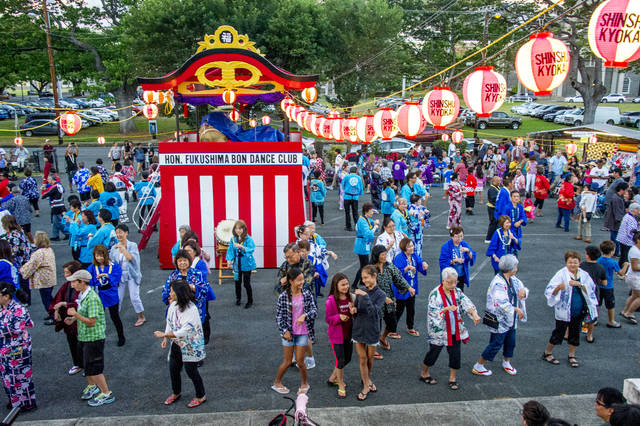This Buddhist observance honoring the ancestors came to Hawaiʻi in the late 19th century with a large wave of Japanese immigrants. Obon is observed in Hawaiʻi during the summer months, when family members place flowers and food on the graves of ancestors and friends and recite the nembutsu, an expression of appreciation, before the family altar.

The centerpiece of the ceremony is the bon dance. It is believed that the first bon dances were performed in the fields where the immigrants labored, and in between houses on the plantation. Later dances were held in temple courtyards. As work schedules began to conform to the Western five-day week, bon dances began to be scheduled for weekends. The bon dance is a way of expressing gratitude to ancestors and loved ones no longer here. It is a way of reflecting upon the preciousness and fragility of this life. Even though the sense of loss of family and loved ones is strong, a festive mood prevails at the dance. Although the dance nearly died out with the onslaught of anti-Japanese fervor that swept Hawaiʻi during the '40s, a post WW II event spurred its revival in 1951 when four Japanese-American veterans' groups sponsored a bon dance to honor the war dead from Hawaiʻi. That revival was also powered by tourism and the convergence of several island traditions: interfaith services, interracial marriages, racial harmony, and bon dance clubs. Today the bon dancers are not only Japanese Buddhists, but Filipino, Chinese, Korean, Portuguese and native Hawaiʻian, Protestant and Catholic. Bon dance clubs in recent years have enlivened the bon dance tradition. Each bon dance club specializes in the music and dance of one of the prefectures of Hawaiʻi's immigrants. Some clubs provide musicians and group of dancers to lead the dancing, while others provide only the music.
